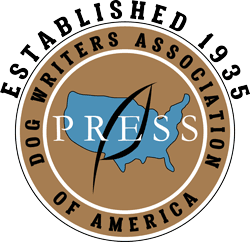We are on the cusp of major changes in the publishing industry. Publishing power is becoming more consolidated at the top. Meanwhile, smaller presses and self-publishing options are flourishing in response.
The reality, though, is that many writers, myself included, still dream of a traditional publishing deal.
Before you can get a book deal, you need to land a literary agent. A literary agent serves as your manuscript’s sales team, taking it to editors at publishing houses and striving to get you the best possible deal. I recently signed a contract with Cole Lanahan, a literary agent at The Seymour Agency. She’s taking my manuscript out on submission right now, which is exciting and nerve racking.
Before I signed with Cole, I spent months researching how to land an agent and today I want to share with you the ten tips that secured my agent. Please note this is only one person’s experience. If you read social media or writers’ forums, you’ll see experiences span the gamut. I suspect there are solid reasons some writers find success while others don’t.
Here are my 10 tips for landing a literary agent based on my experience:
1. Polish your manuscript
2. Research query letter best practices
3. Craft a compelling pitch
4. Solicit beta readers for your query
5. Research agents
6. Create a tracking spreadsheet
7. Query in batches
8. Follow up
9. Develop a thick skin
10. Be gracious!
Obviously, right? Well, agents report authors arguing with them, berating them, badmouthing them on social media, and more. Don’t be that writer. Build bridges instead of burning them–even when you’re disappointed by a rejection.
It’s a long, daunting process, but I believe in you and your work. And I believe in the power of our dogs and our dog stories. Querying is difficult but oh-so worth it. Please reach out if you’d like support on your querying journey! I’m always happy to share my experience!
—Maggie
I’ve included the query letter that secured my agent.
For context, and to compare with what you see on social media, here are the stats for my letter:
- 38 sent
- 18 no replies
- 9 form rejections
- 5 personal rejections; two asked to see next MS
- 4 requests for full manuscript
- 1 request for partial manuscript (first three chapters)
- 1 request for proposal
Dear Ms. Lanahan,
I was thrilled to see you are looking for an exploration of the human-animal bond. I’m writing to introduce you to FOR THE LOVE OF DOG, a 60,000-word work of narrative nonfiction that combines the science of INSIDE OF A DOG with the heart of DOG MEDICINE to unravel the improbable bond between humans and pups.
Dogs and humans are buddies on an evolutionary scale. Our histories intertwine so inextricably that we can’t separate our lifelines from theirs over the past 20,000 years. But, despite those tens of thousands of years of coevolution, it turns out we still have a lot to learn from dogs. (They, however, have us pretty well figured out.)
As a shy introvert and hard-core people pleaser, I wanted to move through life unseen. Invisible. So, when I adopted three dogs you simply couldn’t ignore–Emmett, a gentle giant pit bull; Lucas, a three-legged shepherd mix; Cooper, a wiry and neurotic staffie–they blew my cover. As we tackled anxiety, cross-country moves, stray kittens, dog bites, and cancer (all of us), I learned to advocate for them. In turn, they helped me find my voice. To root our story in science, FOR THE LOVE OF DOG weaves together research on dog behavior and canine cognition with my experience with my boys. This book gets to the heart of why we first fell in love with dogs, why we still love them thousands of years later, and why they've always loved us right back. Prepare to look at your own pup in a whole new light.
I write the award-winning blog, Oh My Dog! (ohmydogblog.com), which has appeared in The New York Times, Animal Wellness, and Dog Fancy. For the past decade, I’ve covered dogs, cats, and the human-animal bond for publications like NationalGeographic.com, Pet Enthusiast Magazine, PetGuide.com, and Victoria Stilwell’s Positively.com. My work has received numerous awards from the Dog Writers Association of America, the Cat Writers’ Association, DogTime Media, Fear Free Pets, and the American Association of Feline Practitioners. I served as VP of the Dog Writers Association of America and currently help with the newsletter.
Thank you for your time and consideration. I look forward to hearing from you!
Take good care,
Maggie


